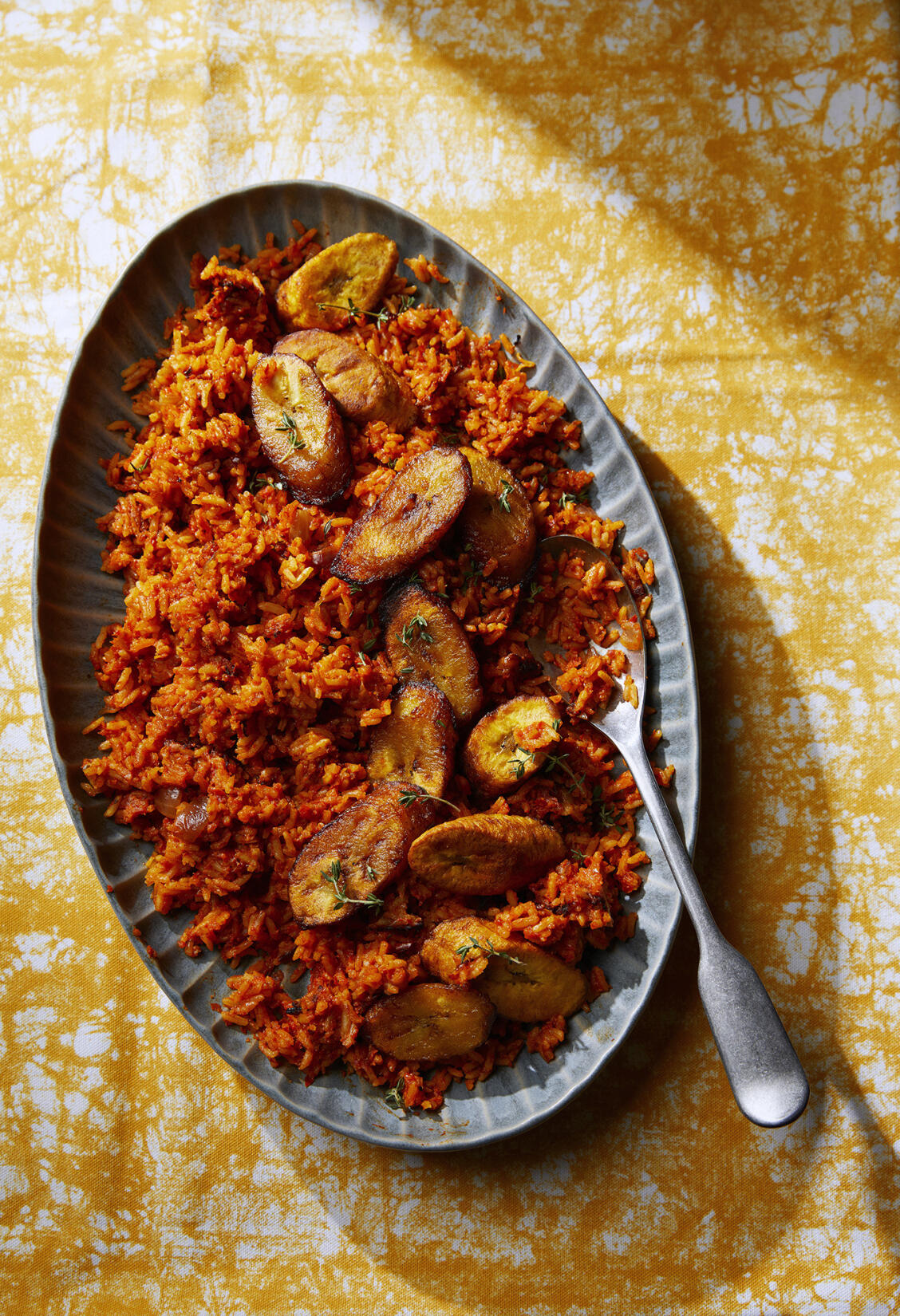Buy the book
"Bursting with flavour and offering a sense of wanderlust, Africana will bring the magic of the continent to your kitchen."
Buy onlineAromatic, spicy and dubbed the "queen of west African kitchens". This dish can be traced to the 1300's in the ancient Wolof Empire, spanning parts of today's Senegal. As the empire grew, the Wolof people dispersed and eventually variations of the dish became synonymous with the regions.
From Africana: Treasured recipes and stories from across the continent by Lerato Umah-Shaylor (HQ Harper Collins)
Serves 4-5
300g long-grain or basmati rice (thoroughly rinsed)
250-400ml chicken or vegetable stock
For the puree
6 medium vine-ripened tomatoes or 1 × 400g can plum tomatoes
2–3 red Romano or bell peppers, stemmed, deseeded and roughly chopped
1 large brown onion, peeled and roughly chopped
1–2 red or yellow scotch bonnet peppers, stemmed and roughly chopped, or pierced and left whole
5cm piece of ginger, peeled and roughly chopped
5 garlic cloves, peeled and roughly chopped
For the Jollof base
90ml coconut, rapeseed or vegetable oil
1 small red onion, peeled and finely sliced
2 tbsp tomato puree
2 tsp curry powder
2 tsp smoked paprika
1 bay leaf
1 tsp dried thyme
4–6 sprigs of thyme, some thyme leaves picked and kept for garnish
1. Place all the puree ingredients in a food processor, except the scotch bonnets, if using whole, and blend to a thick and aromatic puree.
2. Place the oil in a wide large saucepan, with a tightly fitting lid, and set over a medium heat. Add the red onion and a pinch of fine sea salt. Cook for 15 minutes, stirring often, until softened and golden. If it starts to get dry, add a little splash of water to prevent the onion from burning.
3. Stir in the tomato puree and cook for 2–3 minutes, until the puree starts to separate.
4. Add the spices and herbs and cook for 2 minutes, stirring continuously.
5. Gently pour in the blended puree, stirring well, cover and cook for up 20–25 minutes, until the puree is reduced to a drier sauce. Keep a close eye on it and stir.
The smoked paprika is a cheat to add the smoky flavour that is typically achieved through cooking on firewood or coals. I love adding vegetables to jollof. Raid your fridge for leftovers.
— Lerato's tip

Tara Fisher
6. Add the rice and stock (about 250ml for basmati rice and up to 400ml for long-grain rice), ensuring there is enough water to just submerge the rice. Season with 2 teaspoons of fine sea salt and stir just once. Add the scotch bonnet, if using whole. Bring to a boil, then reduce the heat, cover and simmer over a medium low heat for up to 30 minutes. The sauce must be visibly simmering to ensure the rice cooks properly.
Jollof rice is at its best cooked low and slow for perfectly plumped grains. Check at 15-minute intervals as the rice may start to catch at the bottom. If the sauce dries out and the rice is still not cooked, add a little more water or stock around the edges, gently pushing the grains from the sides to the center without stirring.
A burnt bottom is perfectly acceptable and encouraged as it infuses a wonderful smoky flavour into the grains!
7. Once the rice is cooked, remove the pan from the heat and leave covered to steam for a few minutes. Fluff with a fork, scatter over the reserved thyme leaves and enjoy your wonderful creation with a fresh salad like Kachumbari with Hibiscus Pickled Onion and Fried or Spiced Roasted Plantains, because jollof and plantains are a match made in heaven.
We'd love to keep in touch and send you the latest news, events, competitions and offers from the Bay. Sign up to receive our e-newsletter.